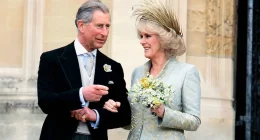Elliott Erwitt, who died at his Manhattan home on Wednesday at 95 years old, was an irregularity. Photographic artists who have a comedic viewpoint on life are rarely commended in a similar way as the people who report war and desperation or lift up the normal world.
He created visual gags with his camera for north of sixty years, coincidentally finding significant content while walking. His shrewd perception of entertaining and at times enlightening conjunctions —, for example, a canine in a graveyard prostrate on its back, a Coca-Cola machine gleaming in the midst of a public presentation of rockets in Alabama, or a pruned plant in a pitiful Miami Ocean side dance hall in an impressive way — acquired him repeating commitment and the partiality to an audience that reflected his charming, Chaplin-like levity.
| Born |
July 26, 1928 Paris, France |
|---|---|
| Died | November 29, 2023 (aged 95)
New York, U.S. |
| Nationality | French American |
| Occupation | Photographer |
North of twenty of his works were distributed clearly, and his prints are held in photography assortments around the world. Sasha Erwitt, his little girl, affirmed the end.
Mr. Erwitt, whose clever photos of canines were distributed in books, for example, “Child of Bitch,” “To the Canines,” and “Woof,” earned boundless respect for portraying these canines as both lone creatures with individual distractions and friendly human sidekicks.
He directed travel lobbies for Ireland and France and shot illuminators (Humphrey Bogart, Jack Kerouac, Marilyn Monroe, Che Guevara) forever, Look, and different distributions.
Some of his photos accomplished reputation. In 1963, at Arlington Public Burial ground, one of his most eminent works portrays a hidden Jacqueline Kennedy gripping a collapsed American banner while going to the interment of President John F. Kennedy.
A considerably more broadly perceived occasion happened in 1959 when VP Richard M. Nixon connected with Soviet Head Nikita S. Krushchev on the chest during a display of American items in Moscow known as the “Kitchen Discussion.”
(During the 1960 mission, conservatives changed the picture into a banner, which chafed the vigorous enemy of Nixon Mr. Erwitt. “It was used without my assent,” he expressed in this way. “I was maddened, however I was frail to mediate.”
“Mother and Kid” was the title of an extra noteworthy photo from Edward Steichen’s landmark photograph presentation “The Group of Man” (and resulting book) at the Gallery of Current Craftsmanship in New York. Caught in 1953, the picture portrays a lady leaning back on a bed and looking eagerly into the eyes of her baby, meanwhile a feline peacefully notices the environmental factors. Ellen, the baby, was the girl of Mr. Erwitt, and the departed in 2011 Lucienne Matthews was his most memorable spouse.
His work was shown in galleries from the 1960s until his destruction, and he was granted limited presentations at the Craftsmanship Establishment of Chicago, the Exhibition hall of Current Craftsmanship in Paris, the Barbican in London, and the Gallery of Current Craftsmanship in Paris throughout the long term. An exhaustive review was shown at the Museo Nacional Centro de Arte Reina Sofia in Madrid in the year 2002.
Born in Paris on July 26, 1928, Elio Romano Ervitz (“Romano, in light of the fact that my dad once went to the College of Rome and loved it”) was the descendants of a Russian Conventional Jew (his family incorporated various Talmudic researchers) and his Russian life partner. They ran away to France after the Upheaval of 1917.
Elliott Erwitt uncovered in a self-portraying exposition remembered for his 1988 book “Individual Openings” that his dad, Boris, had kept up with his conviction in communism and credited the couple’s takeoff from “the Guaranteed Place where there is the Soviet Heaven” to his better half, Eugenia (Trepel) Erwitt, whom he reviewed as “embarrassingly rich when I was a kid.”
His dad, having moved the family to Italy, considered Mussolini’s organization terrible in 1938 and returned the whole family to France. A year after Boris and Eugenia had separated from in Milan when their child was four years of age, the three set out on a journey to the US together on a vessel only days before the flare-up of The Second Great War.
In New York, Elio Ervitz accepted the name Elliott Erwitt, however he kept up with his itinerant way of life. In 1941, following two years of dwelling together with his dad, a sales rep, on Focal Park West in Manhattan, the dad and child ventured out crosscountry to Los Angeles while supporting themselves through the offer of wristwatches in little networks.
Yet again his dad left a couple of years after the fact, this opportunity to New Orleans to sell his wares, passing on his sixteen-year-old child to battle for himself. Following his appointment as a Buddhist minister in Japan, Boris got back to Manhattan to rehearse his embraced confidence.
Elliott Erwitt turned into a picture taker, as per Mr. Erwitt, who credited his prosperity to his “bashfulness” upon his appearance in New York, where he talked no English. At sixteen years old, he started taking photos truly in Los Angeles utilizing a rare collectible glass-plate camera prior to moving up to a Rolleiflex.
Read Related Also: Millie Gibson Parents: Father Businessman And Mother Housewife
“My most memorable client was my dental specialist,” he composed. “From there on, it was individuals’ homes and kids, lastly the senior prom.” Celebrity photos likewise sold well.
Following his graduation from Hollywood Secondary School, he went to Los Angeles City School to concentrate on photography, then functioned as a trickster in a business dim room. He got back to New York in 1949, where he experienced Capa and Steichen, went to the New School for Social Exploration to concentrate on film, and laid out a promising proficient direction before his selection by the Military during the Korean Conflict.
In 1951, while positioned in France with a Military Sign Corps separation, he caught a picture of soldiers relaxing in the garisson huts. As indicated by him, the photo on a very basic level changed his reality.
Elliott Erwitt was granted an award for his accommodation to a Daily existence magazine challenge, and the subsequent photo was named “Bed and Fatigue.” Mr. Erwitt gained a vehicle with the $2,500 check, thought about a significant aggregate at that point. He initiated the vehicle “Thank you, Henry,” after the distributer of Time-Life, Henry Luce.
Character themes that Mr. Erwitt had previously settled were the offbeat and the unheralded. He created a canine-themed representation for a style publication highlighting ladies’ footwear in The New York Times Magazine in 1946.
Various displays highlighted a picture from that task portraying a gasping Chihuahua in a sweatshirt close by a lady in shoes on a walkway.
The explanation he decided to photo according to a canine’s point of view was that canines see more footwear than some other creature.
Mr. Erwitt used a view camera transcendently for promoting tasks, holding his 35-millimeter for individual use. Many, including Henri Cartier-Bresson, were dumbfounded by the straightforwardness with which his companion could perform the two sorts of work.
Mr. Cartier-Bresson once remarked, “As I would like to think, Elliott has achieved a wonder by dealing with a bunch of prisoners of business crusades while offering a bundle of taken photos with a particular flavor and a grin from his more profound self.”
Mr. Erwitt, whose capability in four dialects empowered him to get steady work in Europe all through the 1950s, 1960s, and 1970s, savored the experience of his free work.
“While specific people might find shakiness painful, I have never thought that it is especially troublesome,” he wrote in 1988, adding that his conflicting pay overwhelmed his lady friends and mates than it did on him.
Mr. Erwitt was recently hitched and separated from multiple times: from 1953 to 1960, to Lucienne Van Kan; from 1967 to 1974, to Diana Dann; from 1977 to 1984, to Susan Ringo; and from 1998 to 2012, to Pia Frankenberg.
Elliott Erwitt is additionally made due by Amelia Erwitt, one more girl from his third marriage, notwithstanding Sasha; Ellen and Jennifer Erwitt, two little girls from his most memorable marriage; Misha and David, two children from his most memorable marriage; ten grandkids, and three extraordinary grandkids. His inexact sixty years of home were spent on the Upper West Side of Manhattan.
During the 1970s, Mr. Erwitt was one of the early financial backers to gain by the workmanship market’s interest with contemporary photos. Dealers bought enormous amounts of prints to use charge covers. “That bonus paid for my East Hampton home,” he made sense of.
1972 saw the distribution of “Photos and Enemies of Photos,” the principal in a progression of books by Erwitt. He likewise created and coordinated a few short narrative movies during this period, including “The Radiant Walking 100” (1980), “The Many Essences of Dustin Hoffman” (1968), “Excellence Knows No Aggravation” (1971), “Red, White and Twang” (1973), and “The Glassmakers of Herat, Afghanistan” (1977). All through the 1980s, he delivered an assortment of eighteen short comedies for HBO.
Notwithstanding, his hilarious and adroit still photography is his most persevering through heritage. Bareness entertained him similarly as, and he found equivalent measures of material on open sea shores and in the roads. The human parody animated his vision, in spite of the fact that he experienced trouble in articulating the system by which it happened.
“Indeed, even in the most untainted of conditions, a photo will be dead; nothing will arise,” he noted. “By then, even a photo of nothing, like a singular scratching their nose, can yield a remarkable outcome.”
Notwithstanding the carefree idea of his delineations, he kept a resolutely hostile to scholarly position with respect to his activities.
He moved toward translation with alert. He expressed, “as a rule, I don’t think excessively.” “I positively don’t utilize those clever terms that craftsmanship pundits and exhibition hall guests see as entertaining.”
Instagram account.





